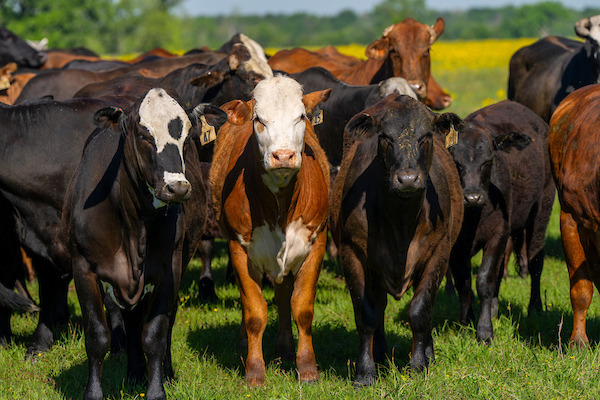Texas A&M AgriLife modernizes database tool to help cattle producers make critical financial decisions
Improvements will allow for easier and better data collection and analysis
For beef cattle producers, opportunities for change and improvement within the beef herd begin with understanding areas of opportunities, weaknesses and vulnerability so they can find ways to achieve their goals.

To support the beef industry and producers in making these critical financial decisions and toward rebuilding the depleted Texas cattle herd, a Texas A&M AgriLife team is modernizing a database program that has already aided cow-calf producers in the southwestern U.S. for the past three decades.
The effort to modernize the Beef Cow-Calf Standard Performance Analysis, SPA, is being funded by a $420,000 grant from the Farm Business Management and Benchmarking Competitive Grants Program of the U.S. Department of Agriculture National Institute of Food and Agriculture, NIFA.
The improvements will allow for easier and better data collection and analysis so producers can have the information needed to make important operational and financial decisions.
A standardized method of beef cattle performance
Since 1992, the SPA program has helped beef cattle producers in the southwest reduce their costs while improving production, financial efficiency and profitability. It has amassed a database of over 650 cow-calf herds and 432,876 breeding cows, allowing producers to compare their performance and identify areas for improvement.
Pancho Abello, Texas A&M AgriLife Extension Service agricultural economist based at the Texas A&M AgriLife Research and Extension Center at Vernon and primary investigator for the project, said the SPA methodology was developed because no standardized method of performance analysis had existed in the cow-calf industry.
“The objective of SPA has been to help cow-calf producers achieve their goals by effectively analyzing their production and financial performance,” he said. “It gives us the ability to create a unique historical integrated production and finance benchmark system for the beef cattle industry in our state.”
The SPA database allows producers to compare their herd’s results with a consistent industry benchmark for similar operations across different regions, production years or production systems, Abello said, and identify potential areas of improvement.
After completing an in-depth financial and production analysis of their cow herd with the help of AgriLife Extension, producers can track their yearly progress to achieve their goals by successfully analyzing their production and financial performance.
Data on production performance is collected on various factors, including reproduction, production, grazing and raised-feed land, and marketing and economic performance.
Modernizing the performance analysis program for beef cattle producers
Working on the program modernization are Abello and Yuri Calil, Ph.D., AgriLife Extension economist based at the Texas A&M AgriLife Research and Extension Center in Corpus Christi, both in the Department of Agricultural Economics, and Jeff Goodwin, Ph.D., director of the Center for Grazinglands and Ranch Management and Texas A&M AgriLife Research research assistant professor in the Department of Rangeland, Wildlife and Fisheries Management, Bryan-College Station.
Their goal will be to modernize how cow-calf producers collect and analyze data by converting the current SPA format into a more user-friendly web application that will broaden its scope to include other industry segments. They will also update calculations to align with current Farm Financial Standard Council guidelines.

“We plan to develop a standardized database and analysis framework that aligns with current guidelines and meets the needs of modern producers,” Calil said. “The new website will use a more advanced system that will allow for an easier, more user-friendly interface with producers so we can obtain the best possible feedback from them.”
Calil said the new web application will provide producers with a “report card” that shows how they rank in relation to other producers in the database, but information on specific operations will be anonymous.
Abello said the new web application also will make it easier for producers to organize and report their financial information, leading to better decision-making and improved accuracy of the SPA analysis over time.
Informing producers about program modernization
Workshops will be held throughout Texas to train producers on using the new platform and highlight the benefits of participating in SPA, Abello said. The goal is to help producers understand the opportunities within data collection and show them just how easy it will be to use the new web application.
“Using the SPA analysis tool is a good place for producers to get useful information about where they currently are and for making decisions that will help get them to where they want to be,” he said.





